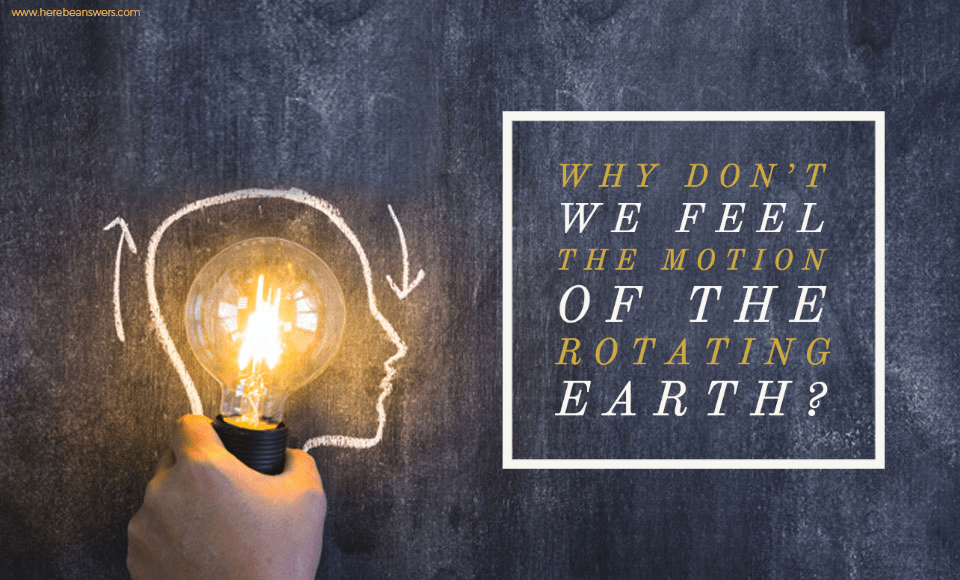Wherever you are right now, try to stop what you are doing, stand still, and observe. You are moving. Can’t you feel it? Although you feel stationary, you are indeed moving as the Earth moves.
The Earth is moving, and continually spinning round. The speed of its movement depends on what latitude you are located at. From the equator, it has a speed of about 1,037 mph (1,670 km/h). Yet, you cannot feel this movement because you and everything else inside this planet are spinning along with the Earth at the same constant speed.
One best way to make you understand that the Earth is moving is when you are inside a car with fast speed on a straight flat road, then suddenly, someone driving the car slam on the brakes. If you have unbuckled your seatbelt, you might throw yourself off or hit your head to something in front of you.
Now in the same scenario earlier, try to open the window of your car and stick your limbs out; you’ll feel the wind blow mildly against it. The faster the car runs, the greater the force you’ll feel, but the way that your hand feels the force isn’t necessarily intuitive.
That force only exists because your hand, physically, moves at a relative speed to the air molecules it’s colliding with. But if you had the car windows closed, your hand wouldn’t feel any force at all because the air inside the car is stationary relative to your body. You only feel a force when two objects are in relative motion to one another. (click here for more details)
If, for instance, the Earth’s spin will suddenly speed up or slow down, you surely will feel and see it.
Our ancestors were confused about the true nature of the cosmos. They observed and noticed that the stars, moon, and the Sun appeared to move above the Earth, and the Earth’s spin, on the other hand, couldn’t be felt. This made their assumption that the Earth was stationary, and “the heavens” moved above us. (click here for more details)
The early Greek scientist, astronomer, Aristarchus of Samos, proposed the heliocentric model of the universe hundreds of years B.C., stating that Earth rotates on its axis and revolves around the Sun. However, great philosophers maintained a geocentric (Earth-centered) idea of the cosmos for many centuries.
It wasn’t until the 16th century that Polish Mikołaj Kopernik or Nicolaus Copernicus’s heliocentric model theory was better discussed and understood. It eventually convinced the world that the planets have the Sun as the fixed point to which motions are to be referred. And Earth is a planet orbiting the Sun annually and turns once daily on its axis, and that prolonged long-term changes in the direction of this axis account for the precession of the equinoxes. (click here for more details)
What if the Earth stops spinning?
According to NASA, there is “practically zero” probability that the Earth would stop spinning for the next billion years. However, theoretically, if the Earth suddenly stopped its motion, the atmosphere would still be moving at the Earth’s original rotation speed. Consequently, it would cause everything to be swept off the land, including people, buildings, trees, topsoil, and rocks.
You would never really wish the Earth stops spinning because, according to NASA, the magnetic field would presumably disappear. After all, it is thought to be generated in part by a spin. There will be no more colorful auroras and the Van Allen radiation belts. The Earth would be naked against the fury of the Sun. Every time it sent a coronal mass ejection (charged particles) toward Earth, it would hit the surface and bathe everything in radiation. A significant biohazard it is!
The presence of night and day is enough reason to make us understand that indeed the Earth is spinning. Léon Foucault had used a pendulum to demonstrate the effect of the Earth’s movement. He invited a group of scientists, appealing them with a note declaring, “You are invited to see the Earth turn.”
At the ceiling of the Meridian Room of the Paris Observatory, Foucault hung a pendulum. As it swept through the air, it traced a pattern that conclusively proved the world was spinning about an axis. (click here for more details)
